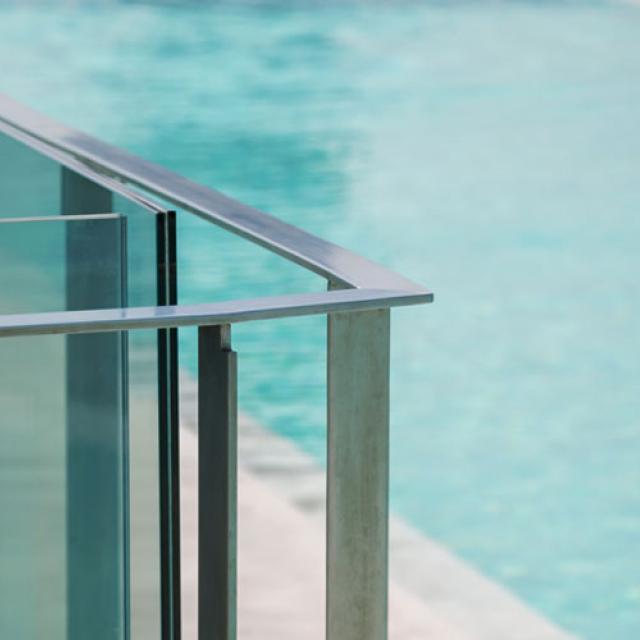Residential pool safety: A regulation applicable to everyone starting September 2025

Residential swimming pools, whether inground, aboveground, semi-inground, or even inflatable, pose a significant risk of drowning for young children. To ensure everyone’s safety, as of September 30, 2025, owners of residential pools installed prior to November 1, 2020, must comply with the Residential Swimming Pool Safety Regulation (the “Regulation”). All other residential pools must already comply with this Regulation. Among the measures to be implemented, please note that any access to a pool 60 cm or deeper must be fenced, even if access to the yard is already controlled by a fence.
To familiarize yourself with the Regulation, here’s some information you’ll need to comply with it and at the same time, improve the safety of your pool and protect your loved ones. Please note that depending on when you installed your pool, exemptions may apply. Your municipality may also have stricter rules that you must follow.
A regulation to keep young children safe
In the early 2000s, statistics on drowning in Québec residential pools were of particular concern, largely due to the sheer number of pools in the province and the fact that regulations can vary from one municipality to another. To ensure safe access to these swimming pools, the Residential Swimming Pool Safety Act was passed in 2007, giving the government the power to establish, by regulation, a uniform framework for residential pool safety and entrusting municipalities with the responsibility of enforcing it.
The Regulation came into effect in July 2010. Its main purpose was to control young children’s access to residential swimming pools through measures such as the installation of an enclosure with a safety gate. Initially, however, it grandfathered existing pools.
Following numerous drownings in private residential pools in recent years, several coroners recommended that the Regulation be amended to apply to all residential swimming pools. In response, the Regulation was amended in May 2021 to include all residential pools and came into force on July 1, 2021.
What the Regulation says
All owners of a residential pool, regardless of when they acquired it, must comply with the Regulation by September 30, 2025, which includes fencing and locking access to their pool. If your pool was installed after November 1, 2010, it should already comply with the Regulation.
Depending on your situation, it is now or soon will be mandatory to install a fence around a pool with a water depth of 60 cm or more, whether it is inground or semi-inground, aboveground with a wall less than 1.2 m high, or portable with a wall less than 1.4 m high.
Fence characteristics
To be compliant, the fence must meet these three criteria:
- Be at least 1.2 m high from the ground at any point
- Prevent the passage of a spherical object 10 cm in diameter (between the bars or between the ground and the bottom of the enclosure)
- Be made in such a way as to be difficult to climb
If the enclosure is a chain-link fence, the mesh must be no more than 30 mm wide, otherwise slats must be inserted. A hedge or bushes do not, under any circumstances, constitute a fence.
Please note that there are some exceptions to this requirement.
Pool access
Every gate providing access to the pool must have the same characteristics as the fence and comply with all the following rules:
- Close and lock automatically
- Be equipped with a safety latch installed either on the side of the pool, in the top part of the door, or on the outside, if it is at least 1.5 m high
The rules may vary depending on the type of latch.
Layout around the pool
To prevent children from climbing the fence and accessing the pool, the layout around the pool must also be safe. According to the Regulation, subject to applicable exceptions, there must be a one-metre buffer strip around the outside of the fence or the pool wall if the pool is not enclosed (see the next section on aboveground and portable pools). No structures or fixed equipment that can be used for climbing may be located within this strip.
Installation of a diving board
If the pool is equipped with a diving board, it must comply with Bureau de normalisation du Québec standards, unless otherwise specified. It’s important to check with your municipality to find out what regulations apply, before installing a diving board in your residential pool.
Some tips for securing access to an aboveground or portable pool
Under the Regulation, fencing is not required around an aboveground pool with a wall height of 1.2 m or more or a portable pool with a wall height of 1.4 m or more. However, you must secure access by following these rules:
- If you use a removable ladder to access your pool, it must be equipped with a safety gate that closes and locks automatically.
- If you access your pool from a platform, you must install a fence with a safety gate on or at the bottom of the platform.
- If you access your pool from a deck attached to your home, you must install a fence with a security gate on the deck between the house and the pool.
You must ensure that the fence and the access gate have the features described above. You must also leave a one-meter buffer strip around your pool.
Stricter regulations in some municipalities
Municipalities are responsible for enforcing the Regulation. They may also have stricter rules governing the installation and layout of residential pools. It’s therefore important to be aware of the regulations in force where you live and ensure that your installation complies with them.
Importance of complying with the Residential Swimming Pool Safety Regulation
The main purpose of the Regulation is to protect children by reducing the number of accidents and drownings in residential swimming pools. By securing access to your pool, you’re ensuring the safety of your children, those of your friends and family, and all the curious youngsters in your neighbourhood. It’s also important to note that a residential pool owner who violates a provision of the Regulation is liable to a fine ranging from $500 to $700. Local municipalities may also impose tougher penalties.
Pool insurance is great protection to keep in mind for your water feature!
Making your pool safer by complying with the Regulation is the best way to protect young children and prevent accidents. But to protect your pool from damage, it’s essential to have insurance for your pool.
Your home insurance may not automatically cover your pool in the event of damage. So, before you install a pool, it’s a good idea to update your insurance to include all the necessary coverage.
Lastly, if you’re unable to comply with the Regulation for any reason and must remove your pool, contact your damage insurance representative to inform them.
If you have any questions about home or pool insurance, please contact one of our damage insurance representatives.
Please note that this text is for information purposes only and in no way constitutes legal advice. To learn more about the specific rules that apply to you, please contact a legal advisor.



